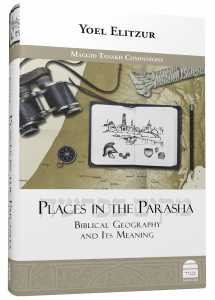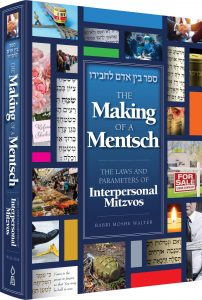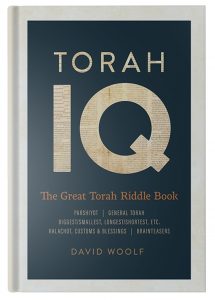Reviews in Brief – Winter 2021
Places in the Parasha: Biblical Geography and Its Meaning
The geography of the Bible is an obviously important area of study. However, the layperson would be forgiven for finding the subject overly technical, since it focuses greatly on linguistics and obscure aspects of the sacred text. The existence of competing theories among scholars makes these ideas difficult for even the motivated amateur to follow. All of this makes Professor Yoel Elitzur’s work in this area so important.
In relatively brief essays, Professor Elitzur, an expert in the fields of Biblical and historical geography as well as in Hebrew and Semitic languages, takes a topic related to the weekly Torah portion and guides readers through that subject. Taking readers on a tour of Israel, he tells stories of the search for Biblical places and connects these places to classical texts and religious ideas. Additionally, he includes a select bibliography for each essay so interested readers can conduct further investigation. The book is full of maps, pictures and diagrams so the reader can “see” the stories, not just read about them. In this way, an obscure but important aspect of the Bible comes alive. The Land of Israel is a reality we can visit today. Professor Elitzur makes the Bible likewise a reality we can “visit.”
We know the Jews in Egypt lived in Goshen, but where was it? Professor Elitzur argues that Goshen is the Hebrew name for the region known in Egyptian as Ramesses. The city of Shiloh is well established in modern-day Israel. The question remains where in the historical city the mishkan was located. Professor Elitzur argues for a creative suggestion offered by Rabbi Yoel Bin-Nun that the mishkan’s location in Shiloh mirrored the (future) Temple’s location in Jerusalem.
Professor Elitzur characteristically incorporates important Torah thoughts within his essays. He does not merely ask where Amalek lived but also why the nation was considered so significant. He answers that Amalek served as something of an evil twin to Israel. Israel wandered and Amalek wandered likewise; Israel became a nation and Amalek is called a nation at that time also; Israel settled into its land at the same time the Amalek settled into its land. Israel and Amalek developed simultaneously and competed for a place in history. The fight with Amalek is a battle for Israel’s survival.
Offering readers an easy entrance to a highly technical world, Places in the Parasha helps make the Bible a living reality.
The Making of a Mentsch: The Laws and Parameters of Interpersonal Mitzvos
I often hear the criticism that Jews today practice Judaism as if it was just a collection of rituals when it is really much broader than that. In Rabbi Moshe Walter’s book, The Making of a Mentsch, he disproves this criticism by showing how halachah applies to a wide variety of human interactions. This is how it should be. Indeed, every few years another book is published in Hebrew or English guiding readers through the many Torah laws regulating human interaction. Many of these books are excellent and Rabbi Walter builds on them to offer an extremely usable and readable guide to this aspect of Jewish life.
From one perspective, The Making of a Mentsch is a typical halachah guide. The book covers many subjects with clear rulings on distinct cases, amply footnoted with citations from classical halachic sources spanning the generations. Each chapter can serve as a full-length lecture. Well-aware of the rapidly decreasing attention span of our generation, Rabbi Walter divides each chapter into brief, bite-sized sections, many of which begin with thought-provoking questions. While one can easily stop reading at the end of each section, the reader is drawn to continue on to the next one.
Readers who are familiar with other works in this genre will be surprised by the breadth of topics covered. The book addresses expected topics such as different types of chesed, lashon hara and judging others favorably. But it expands beyond these to include some common but unexpected subjects like waiting on line, responding to tzedakah requests and endangering one life to save many. With full command of the halachic literature, Rabbi Walter takes readers through many lesser-known areas of the Shulchan Aruch in which our obligations to others require careful thought and halachic guidance.
Torah IQ: The Great Torah Riddle Book
Every week, after the first course of our Shabbat lunch, I hand out chumashim to everyone at the table and my son then asks the questions in Rabbi Dovid Y. Schwartz’s weekly “Parsha Challenge.” The questions are difficult but I encourage “cheating”—looking through the chumash to find the answer. I find that it is an enjoyable way to discuss the weekly Torah portion. It also allows those who have not yet reviewed the weekly Torah portion to look through it and see some highlights. And when a child figures out an answer first or thinks of a clever answer, it gives him a sense of pride in his ability to contribute to the discussion.
David Woolf’s Torah IQ provides readers with a few years’ worth of questions of this type. The book contains twenty questions for each parashah. The questions are difficult and—even using my method of “cheating”—finding each answer can take five to ten minutes of research and thought. You will probably want to do only four or five questions each week, maybe even fewer. And if you have trouble locating the answer in the text, you might want to keep a Mikraot Gedolot with commentaries nearby for reference (particularly the Baal HaTurim).
Examples of questions include:
1. How old was Yaakov when he finished having children? (Vayishlach)
2. Who coined the phrase “Yiyasher Kochacha”—or colloquially, “Yasher Koach”? (Ki Tisa)
3. I am a firstborn son. Yet, when I receive my inheritance upon the passing of my father, I do not receive a double portion. Why not? (Pinchas)
4. Find one pasuk that contains eight mitzvot (Ekev).
Torah IQ goes one step further, with questions about holidays, laws and blessings, general trivia and brain teasers. A creative parent or teacher can easily use these questions for edutainment purposes.
To be honest, at my home, we often cannot figure out answers to these questions. However, that isn’t the point. We offer suggestions, sometimes silly ones; we discuss, we argue, we learn. Then we look to see the answer, which is on the next page. It is an opportunity to learn some new things as a family. Through these questions, we experience the weekly Torah portion together.
Answers:
1. Yaakov was ninety-nine when his youngest child was born (he was sixty-three when he was blessed by his father, Yitzchak, followed by fourteen years in yeshivah and twenty years with Lavan, two years on the road).
2. Hashem coined the phrase (Shabbat 87a; Rashi, Devarim 34:12).
3. A firstborn son delivered by Cesarean section does not receive a double portion (Rambam, Hilchot Nachalot 2:11).
4. Devarim 12:17 contains eight different mitzvot.
Rabbi Gil Student writes frequently on Jewish issues and runs Torahmusings.com. He serves as the book editor for Jewish Action and is a member of the Jewish Action Editorial Committee.



